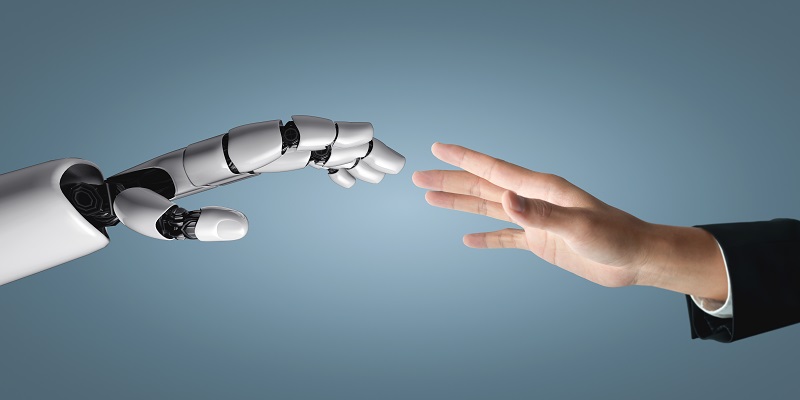Loneliness has become a prevailing issue in today’s society, with a significant impact on the well-being of individuals. To combat this loneliness epidemic, researchers have turned to companion robots enhanced with artificial intelligence (AI). This article explores how AI can improve companion robots and discusses the ethical considerations that need to be taken into account by legislators, policymakers, technologists, and physicians. Additionally, it proposes a fresh way to evaluate the effectiveness of companion robots and emphasizes the need for societal prioritization of social connectedness and eldercare.
The role of artificial intelligence in improving companion robots
Artificial intelligence holds immense potential in advancing the capabilities of companion robots. With sophisticated AI algorithms, these robots can develop social skills that aid in building meaningful connections with their users. AI-driven companion robots can learn and adapt to individuals’ preferences, personalities, and emotions, making their interactions more personal and fulfilling. However, it is crucial to ensure that AI systems integrated into these robots are not only competent but also moral and trustworthy.
The Ethical Considerations of Companion Robots
As society increasingly turns to companion robots to alleviate loneliness, it is essential to address the ethical implications. Some of the key ethical issues include privacy concerns, the potential for emotional manipulation, and the blurry line between human and machine relationships. Legislators, policymakers, technologists, and physicians must work together to establish guidelines and regulations that protect the well-being and rights of individuals while promoting the use of companion robots as a positive societal intervention.
A New Approach to Measuring the Effectiveness of Companion Robots
To accurately gauge the helpfulness of companion robots, a fresh approach is proposed. Traditionally, effectiveness has been measured based on quantitative metrics such as task completion. However, in the context of companionship, a more qualitative approach is necessary. The suggested method focuses on evaluating the impact of companion robots in reducing feelings of loneliness and increasing social connection. By measuring subjective experiences and outcomes, a more comprehensive assessment can be made to determine the success of companion robots in addressing the loneliness epidemic.
The need for societal prioritization of social connectedness and eldercare
Despite the potential benefits of companion robots, they are not a permanent solution to the loneliness epidemic. Society must confront the underlying issues by prioritizing social connectedness and eldercare. As isolation continues to increase, millions of people are left without support or companionship. In the absence of societal support systems, companion robots provide a temporary solution, bridging the gap and improving the well-being of isolated individuals.
Statistics on the rising levels of social isolation and loneliness
The impact of the loneliness epidemic is vast. The Survey Center on American Life reveals a doubling in the proportion of Americans without close friends since 1990. Moreover, loneliness is not limited to one country; approximately a third of the world’s population is expected to be affected by rising levels of social isolation and loneliness. These conditions have been linked to various negative health effects, making it a public health concern that demands urgent attention.
The harmful effects of loneliness on health
Loneliness has more severe consequences than one might expect. Research suggests that loneliness can be just as harmful to health as smoking cigarettes, with negative effects on cardiovascular health, immune function, mental health, and cognitive decline. The detrimental impact of loneliness on physical and mental well-being underscores the urgency of addressing this issue and highlights the potential of companion robots in providing essential support and companionship to mitigate these harmful effects.
The potential benefits of companion robots for older people
Companion robots hold immense potential in promoting the health and well-being of older individuals. These robots can assist older people in maintaining an active and healthy lifestyle while reducing stress and loneliness. By offering companionship, reminders for medication and appointments, and assistance with household tasks, companion robots contribute to the overall quality of life of older individuals. The incorporation of AI into these robots allows them to adapt and personalize their interactions, further enhancing the benefits they can provide.
Ensuring Ethical Guidelines for the Use of Companion Robots
While the application of AI in companion robots opens up exciting possibilities, it also brings forth ethical concerns. Guidelines must be established to ensure that AI systems in companion robots align with moral and trustworthy principles. Ethical standards should govern issues such as privacy, consent, data usage, transparency, and algorithm fairness. By creating a framework of ethical guidelines, society can harness the potential benefits of AI-driven companion robots while upholding the well-being and autonomy of individuals who interact with these robots.
Companion robots enhanced with artificial intelligence offer hope in reducing the loneliness epidemic that plagues our society. They possess the capability to establish meaningful connections, provide companionship, and support the well-being of individuals, particularly in the context of aging populations. However, it is crucial to navigate the ethical considerations associated with AI-driven companion robots. With the establishment of comprehensive guidelines and regulations, we can harness the benefits of these robots while fostering a healthier society that prioritizes social connectedness and caregiving. By addressing the loneliness epidemic head-on and utilizing the potential of companion robots, we can pave the way for a brighter, more connected future.

